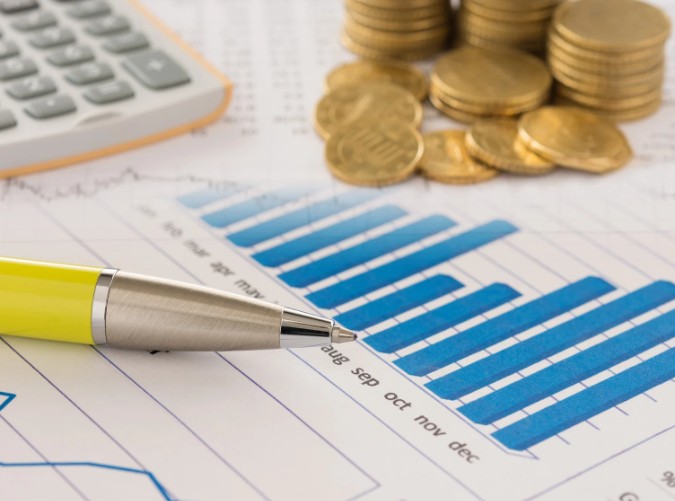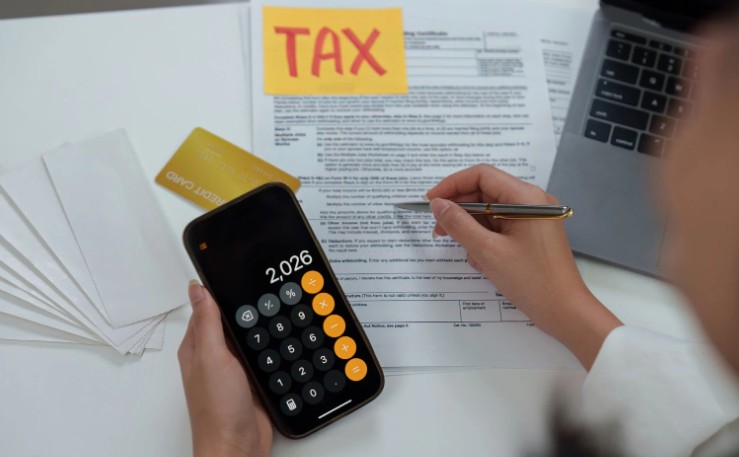One question I get asked more than you might think is: “When does the tax year start and end UK?”
It might seem like a small detail, but knowing the exact UK tax year dates can make a big difference — especially if you’re filing a tax return, claiming expenses, or making the most of tax-free allowances.
I’ve had to explain it to friends, clients, and even colleagues over the years, and every time I do, I realise just how confusing it can be.
So, in this post, I’ll break down exactly when the tax year starts and ends, why those dates are what they are, and how they affect me — and possibly you — in everyday life.
So, When Does the Tax Year Start and End UK?
What are the exact tax year dates?
In the UK, the personal tax year starts on 6 April and ends on 5 April the following year.
To give a clear example:
- The 2024/25 tax year began on 6 April 2024
- It will end on 5 April 2025
This applies whether you’re:
- Employed and paying tax through PAYE
- Self-employed and doing Self Assessment
- Receiving income from investments, rental properties, or pensions
These dates are standard and are set by HMRC (His Majesty’s Revenue and Customs). No matter where you are in the UK — England, Scotland, Wales, or Northern Ireland — this tax calendar applies to you.

Why these unusual dates?
You might be wondering: why not just use the calendar year like most countries?
It’s a fair question — and I used to wonder the same.
The reason goes back centuries, to when the UK switched from the Julian calendar to the Gregorian calendar in 1752.
At the time, the government didn’t want to lose tax revenue, so the tax year was shifted to start on 6 April instead of 25 March (which had previously marked the new year under the old calendar).
It’s a historical oddity that we’ve stuck with ever since — and while it feels awkward, it’s now hardwired into our tax system.
How Do These Dates Affect Me Personally?
Understanding when the tax year starts and ends helps me stay ahead of deadlines — and avoid late filing penalties from HMRC.
Tax returns and deadlines I always look out for
If you’re self-employed like I’ve been in the past, or if you earn extra income outside your main job, you’ll need to file a Self Assessment tax return. Here’s how the key dates work for me:
- Tax year ends: 5 April
- Paper return deadline: 31 October (following the tax year end)
- Online return deadline: 31 January (next calendar year)
- Tax payment deadline: 31 January (same day as filing)
For example, for the 2024/25 tax year:
- You must file online by 31 January 2026
- You must pay any tax owed by the same date
Knowing these dates helps me avoid surprises — I set reminders well in advance.
Resetting allowances and tax bands
Another reason I pay attention to the tax year is because tax-free allowances reset every 6 April.
That includes:
- Your Personal Allowance (the amount you can earn before paying income tax)
- ISA allowances (how much you can invest tax-free)
- Capital Gains Tax thresholds
- Dividend and savings allowances
If I don’t use them before the end of the tax year (5 April), they’re gone. So each year, around March, I look at my finances and see if there’s anything I need to top up or use — especially when it comes to my ISA and pension contributions.

Is the Tax Year the Same as the Financial Year?
No, not quite.
The UK financial year — used by the government and many businesses — typically runs from 1 April to 31 March.
But the personal tax year (used by HMRC for income tax and Self Assessment) runs from 6 April to 5 April. That difference of a few days can matter if you’re doing accounts or setting up a business.
In my case, I always make sure I keep personal and business finances clearly separated. If you’re self-employed, this distinction matters when you’re recording expenses and preparing your tax return.
What Happens at the End of the Tax Year?
As 5 April approaches each year, I usually take a few steps to stay on top of things.
Planning I always do before 5 April
In the weeks leading up to the end of the tax year, I check whether I’ve:
- Used my ISA allowance for the year
- Made any pension top-ups for tax relief
- Sold any assets that might incur capital gains
- Paid myself any bonuses or dividends (if relevant)
This is often called end-of-year tax planning, and it helps me avoid wasting tax-free limits that reset on 6 April.
What to expect after 5 April
Once the new tax year begins, HMRC usually starts sending out:
- Tax coding notices (showing your PAYE tax code)
- Notifications for those needing to file a Self Assessment
- Reminders about tax return and payment deadlines
If I’m due a refund (which has happened a few times), HMRC may process it automatically — or I’ll claim it through the Self Assessment system.
Who Needs to Pay Attention to These Dates the Most?
In my experience, the people who need to be most aware of the UK tax year are:
- Employees: So you can check your PAYE tax code and understand changes to your take-home pay
- Self-employed individuals: Because you’re responsible for submitting your own returns
- Freelancers, contractors, and landlords: Anyone earning outside of a traditional job
- Investors: Who want to use allowances like the ISA or capital gains threshold
- Pension savers: Making contributions before the tax year ends can mean bigger savings
Even if you’re not self-employed, it’s worth knowing the dates. A lot can change financially from one tax year to the next — and being informed puts you in control.

Summary Table: UK Tax Year at a Glance
| Tax Year Dates | Applies To |
| 6 April – 5 April | Personal tax year (individuals, PAYE, SA) |
| 1 April – 31 March | Financial year (government, companies) |
| 31 January | Online tax return & payment deadline |
| 31 October | Paper return deadline |
Conclusion
So, to wrap things up — the UK tax year runs from 6 April to 5 April, and those dates affect everything from how much tax you pay to when you need to submit your return.
Personally, I always plan ahead for 5 April. It’s the perfect opportunity to get your finances in order, make smart tax decisions, and avoid a last-minute rush.
Whether you’re employed, self-employed, or somewhere in between, knowing the UK tax calendar can help you stay compliant and make the most of your money.
Frequently Asked Questions On When Does the Tax Year Start and end UK
1. What is the current UK tax year?
As of writing this, the current tax year is 2024/25, which runs from 6 April 2024 to 5 April 2025.
2. When should I submit my tax return for the 2024/25 tax year?
You can submit it any time after 6 April 2025, and the online deadline is 31 January 2026.
3. Is the tax year different in Scotland or Wales?
The tax year dates are the same across the UK, but income tax bands may vary slightly in Scotland and Wales, as they have devolved powers over certain tax rates.
4. Can I change my business accounting year to match the tax year?
Yes, and some sole traders and small businesses choose to align their accounting year with the tax year (6 April–5 April or 1 April–31 March) to simplify record-keeping.
5. Why does the UK use 6 April and not 1 January like other countries?
It’s due to a historical change in calendars in the 18th century. Rather than lose out on tax days, the government shifted the tax year to start on 6 April — a tradition that’s stuck ever since.

Leave a Reply